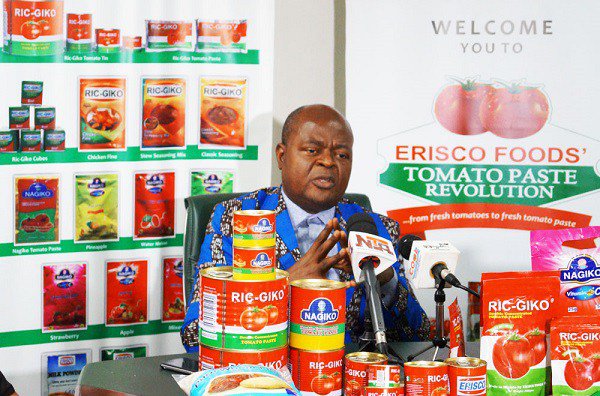JAMB Biology Note- Nutrition
Topic: Nutrition
Sub-Topics:
- Modes of Nutrition: Autotrophic and Heterotrophic.
- Plant Nutrition: Photosynthesis and Mineral Requirements (Macro and Micro-nutrients).
- Animal Nutrition: Classes of Food Substances, Food Tests, Mammalian Teeth, and Alimentary Canal.
Table of Contents
- Sub-Topics:
- LESSON CONTENT
LESSON CONTENT
A. Modes of Nutrition
1. Autotrophic Nutrition
- Definition: Organisms produce their own food using simple inorganic substances.
- Types:
- Photosynthesis: Using sunlight to convert carbon dioxide and water into glucose.
- Chemosynthesis: Using energy from chemical reactions to produce food (e.g., Nitrosomonas bacteria).
- Examples:
- Photosynthesis: Flowering plants like mango, non-flowering plants like algae.
- Chemosynthesis: Certain bacteria found in deep-sea vents.
2. Heterotrophic Nutrition
- Definition: Organisms depend on others for food.
- Types:
- Holozoic: Ingestion of solid food (e.g., humans, sheep).
- Parasitic: Deriving nutrients from a host (e.g., tapeworm, roundworm, Loranthus).
- Saprophytic: Feeding on decaying organic matter (e.g., Rhizopus, mushrooms).
- Carnivorous Plants: Capture and digest insects (e.g., sundew, bladderwort).
B. Types of Nutrition
- Autotrophic Nutrition: Found in green plants and some bacteria.
- Heterotrophic Nutrition: Includes holozoic, parasitic, saprophytic, and carnivorous nutrition.
C. Plant Nutrition
1. Photosynthesis
- Definition: The process by which green plants produce glucose using sunlight, carbon dioxide, and water in the presence of chlorophyll.
- Stages:
- Light Reaction: Requires sunlight to split water molecules (photolysis), releasing oxygen.
- Dark Reaction: Does not require light; involves the Calvin cycle to produce glucose.
- Conditions for Photosynthesis:
- Presence of light, chlorophyll, carbon dioxide, and water.
- Experiment: Detecting starch in a leaf as evidence of photosynthesis.
- Boil the leaf in water to kill it.
- Soak in alcohol to remove chlorophyll.
- Stain with iodine solution.
- A blue-black color indicates the presence of starch.
2. Mineral Requirements
- Macro-nutrients: Nitrogen, phosphorus, potassium (NPK).
- Functions:
- Nitrogen: Promotes leaf growth.
- Phosphorus: Aids root development.
- Potassium: Enhances flower and fruit production.
- Deficiency Symptoms:
- Yellowing of leaves, stunted growth, poor fruit production.
- Functions:
- Micro-nutrients: Iron, manganese, zinc.
D. Animal Nutrition
1. Classes of Food Substances
- Carbohydrates: Energy source; found in rice, bread, yam.
- Proteins: Growth and repair; found in beans, meat, fish.
- Fats and Oils: Energy and insulation; found in butter, palm oil.
- Vitamins: Regulate body functions.
- Vitamin C: Prevents scurvy.
- Vitamin D: Prevents rickets.
- Mineral Salts: Maintain body functions.
- Calcium: Strong bones and teeth.
- Iron: Formation of hemoglobin.
- Water: Vital for all biological processes.
- Balanced Diet: Includes all food classes in correct proportions.
2. Food Tests
- Starch Test: Add iodine; a blue-black color indicates starch.
- Reducing Sugar Test: Add Benedict’s solution and heat; an orange-red color indicates sugar.
- Protein Test: Add Biuret solution; a purple color indicates protein.
- Fat Test: Rub food on brown paper; a translucent mark indicates fat.
3. Mammalian Teeth
- Structure: Crown, neck, root, enamel, dentine, pulp cavity.
- Types: Incisors, canines, premolars, and molars.
- Functions:
- Incisors: Cutting.
- Canines: Tearing.
- Molars and Premolars: Grinding.
- Dental Formulae:
- Man: 2−1−2−3\2−1−2−3.
- Sheep: 0−0−3−3\3−1−3−3
- Dog: 3−1−4−2\3−1−4−3
4. Mammalian Alimentary Canal
- Structure: Mouth → Esophagus → Stomach → Small Intestine → Large Intestine → Anus.
- Accessory Organs:
- Liver: Produces bile.
- Pancreas: Produces digestive enzymes.
- Gall Bladder: Stores bile.
- Processes:
- Ingestion: Taking in food.
- Digestion: Breaking down food.
- Absorption: Nutrient uptake.
- Assimilation: Nutrient utilization.
5. Digestive Enzymes
- Characteristics: Specific to substrates, act at optimum pH and temperature.
- Examples:
- Amylase: Breaks down starch into maltose.
- Protease: Breaks down proteins into amino acids.
- Lipase: Breaks down fats into glycerol and fatty acids.
- End Products:
- Carbohydrates → Glucose.
- Proteins → Amino Acids.
- Fats → Glycerol and Fatty Acids.
Conclusion
Nutrition is essential for growth, energy, and survival. Plants and animals have different strategies for obtaining and utilizing nutrients, with unique structures and processes adapted to their nutritional needs.





